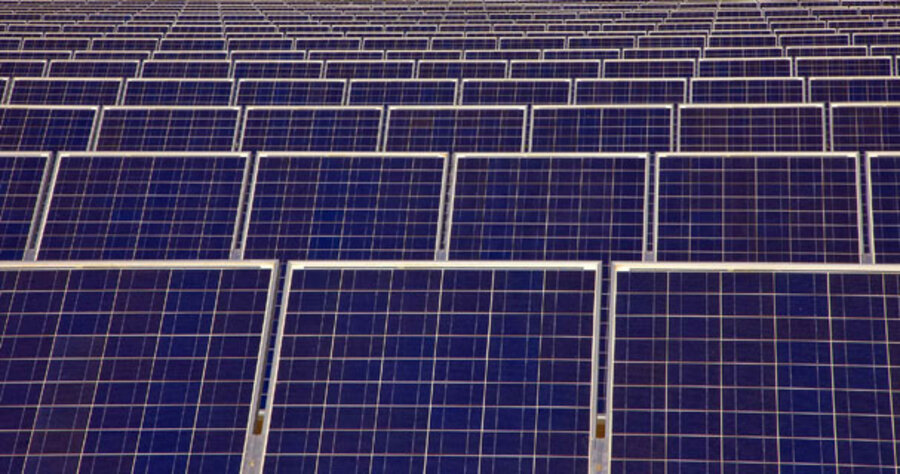Brighter future for solar panels: silicon shortage eases
Loading...
| Menlo Park, Calif.
Quartz, the raw material for solar panels, is one of the most abundant minerals on earth. But for years, the solar industry has faced a bottleneck in processing quartz into polysilicon, a principal material used in most solar panels. The problem stalled a steady decline in prices for solar panels.
Now the silicon shortage may be coming to an end, predict some solar analysts, thanks to new factories coming online.
If true, the price for solar panel modules could start falling by as much as a third by 2010, says Travis Bradford, president of the Prometheus Institute for Sustainable Development in Cambridge, Mass. That’s good news for an industry that remains one of the most expensive power sources.
Global demand for solar panels is growing at about 50 percent per annum, says Mr. Bradford, but the polysilicon supply for solar will grow by 80 percent for each of the next couple of years.
“That should be faster than the demand is growing and should be putting some downward pressure on prices,” he says.
Complicating the supply and demand curves are the fact that most panelmakers are locked into long-term contracts with polysilicon suppliers. Most purchases aren’t happening on the spot market, where polysilicon prices have dropped from a high of roughly $475 a kilogram to around $400 today.
So analysts expect a lag time before large, established panelmakers can pass along savings.
“In terms of driving module prices down toward grid parity, it won’t come from those established players. Where you will see it happen will be [newer] players from China and Taiwan,” says Ted Sullivan of Lux Research in New York.
Many of today’s top solar companies have risen rapidly on the backs of favorable long-term contracts. One such panel manufacturer, SunTech, is feeling the polysilicon bottleneck. A representative told a solar conference in Menlo Park this month that the company struggles to provide even a third of what customers want.
The shortage came about because of the solar boom. The industry has grown by more than 30 percent per year since the mid-1990s, with recent years seeing 50 percent growth. Government programs in Germany, Japan, and California, as well as the fossil fuel price shocks, touched off the boom.
Just seven companies worldwide produce most of the polysilicon used in solar panels. Many started to invest in new plants several years ago and these are now coming online. There are also a host of new polysilicon manufacturing firms trying to get up and running in China.
Half a dozen major plants will go online this year, and another six to 10 next year, says Bradford. By the end of 2009, he says, the industry will be producing almost three times what it did in 2006.
One of the big seven, Hemlock Semi-conductor, has invested more than $1.5 billion in the last three years to ramp up production.
“There’s been a lot of investment in this industry, so at some point we should be reaching a point where there won’t be such a shortage anymore,” says Jarrod Erpelding, a Hemlock spokesman.
The shortage’s demise has been predicted for several years now, making some more cautious about the current forecasts.
“We hear it all the time. We’re from Missouri: We want to see it,” says Sue Kateley, executive director of the California Solar Energy Industries Association. “There’s just so much demand at this point, even if you did get more supply in the chain, at what point do you actually get it easing up on the shortage?”
Some industry insiders privately expressed concern that analysts were overhyping China’s polysilicon manufacturers, which have seen delays and cancellations. Bradford says his predictions already heavily discount that.
“Of the 20 or 30 [Chinese firms] that claim they’ll get there, two or three are likely to be successful,” he says. “But heaven help us if all 20 or 30 are – we’ll be eating the stuff for breakfast.”





